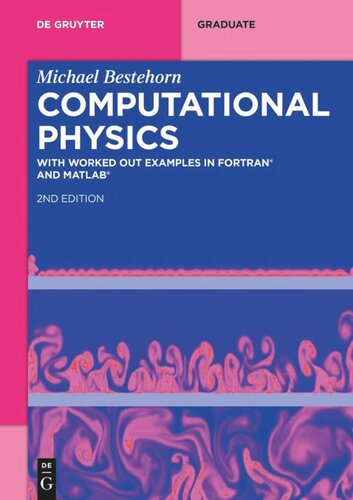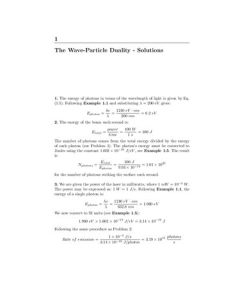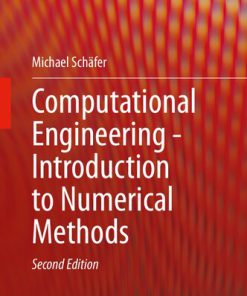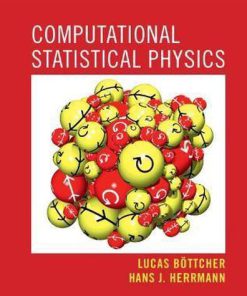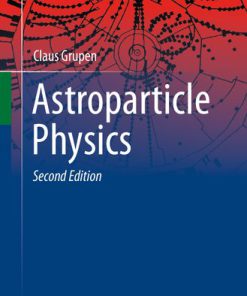Computational Physics 2nd Edition by Michael Bestehorn 9783110782660 3110782669
$50.00 Original price was: $50.00.$25.00Current price is: $25.00.
Computational Physics 2nd Edition Michael Bestehorn – Ebook Instant Download/Delivery ISBN(s): 9783110782660, 3110782669

Product details:
- ISBN 10:3110782669
- ISBN 13:9783110782660
- Author: Michael Bestehorn
Computational Physics
With Worked Out Examples in FORTRAN® and MATLAB®
Table contents:
1 Introduction
1.1 Goal, contents, and outline
1.2 The environment required for program development
1.2.1 Operating system
1.2.2 Software packages
1.2.3 Graphics
1.2.4 Program development and a simple script
1.3 A first example – the logistic map
1.3.1 Map
1.3.2 FORTRAN
1.3.3 Problems
2 Nonlinear maps
2.1 Frenkel–Kotorova model
2.1.1 Classical formulation
2.1.2 Equilibrium solutions
2.1.3 The standard map
2.1.4 Problems
2.2 Chaos and Lyapunov exponents
2.2.1 Stability, butterfly effect, and chaos
2.2.2 Lyapunov exponent of the logistic map
2.2.3 Lyapunov exponents for multidimensional maps
2.3 Affine maps and fractals
2.3.1 Sierpinski triangle
2.3.2 About ferns and other plants
2.3.3 Problems
2.4 Fractal dimension
2.4.1 Box-counting
2.4.2 Application: Sierpinski triangle
2.4.3 Problem
2.5 Neural networks
2.5.1 Perceptron
2.5.2 Self-organized maps: Kohonen’s model
2.5.3 Problems
3 Dynamical systems
3.1 Quasilinear differential equations
3.1.1 Example: logistic map and logistic ODE
3.1.2 Problems
3.2 Fixed points and instabilities
3.2.1 Fixed points
3.2.2 Stability
3.2.3 Trajectories
3.2.4 Gradient dynamics
3.2.5 Special case N=1
3.2.6 Special case N=2
3.2.7 Special case N=3
3.3 Hamiltonian systems
3.3.1 Hamilton function and canonical equations
3.3.2 Symplectic integrators
3.3.3 Poincaré section
4 Ordinary differential equations I, initial value problems
4.1 Newton’s mechanics
4.1.1 Equations of motion
4.1.2 The mathematical pendulum
4.2 Numerical methods of the lowest order
4.2.1 Euler method
4.2.2 Numerical stability of the Euler method
4.2.3 Implicit and explicit methods
4.3 Higher order methods
4.3.1 Heun’s method
4.3.2 Problems
4.3.3 Runge–Kutta method
4.4 RK4 applications: celestial mechanics
4.4.1 Kepler problem: closed orbits
4.4.2 Quasiperiodic orbits and apsidal precession
4.4.3 Multiple planets: is our solar system stable?
4.4.4 The reduced three-body problem
4.4.5 Problems
4.5 Molecular dynamics (MD)
4.5.1 Classical formulation
4.5.2 Boundary conditions
4.5.3 Microcanonical and canonical ensemble
4.5.4 A symplectic algorithm
4.5.5 Evaluation
4.5.6 Problems
4.6 Chaos
4.6.1 Harmonically driven pendulum
4.6.2 Poincaré section and bifurcation diagrams
4.6.3 Lyapunov exponents
4.6.4 Fractal dimension
4.6.5 Reconstruction of attractors
4.7 Differential equations with periodic coefficients
4.7.1 Floquet theorem
4.7.2 Stability of limit cycles
4.7.3 Parametric instability: pendulum with an oscillating support
4.7.4 Mathieu equation
4.7.5 Problems
5 Ordinary differential equations II, boundary value problems
5.1 Preliminary remarks
5.1.1 Boundary conditions
5.1.2 Example: ballistic flight
5.2 Finite differences
5.2.1 Discretization
5.2.2 Example: Schrödinger equation
5.3 Weighted residual methods
5.3.1 Weight and base functions
5.3.2 Example: Stark effect
5.4 Nonlinear boundary value problems
5.4.1 Nonlinear systems
5.4.2 Newton–Raphson
5.4.3 Example: the nonlinear Schrödinger equation
5.4.4 Example: a moonshot
5.5 Shooting
5.5.1 The method
5.5.2 Example: free fall with quadratic friction
5.5.3 Systems of equations
5.6 Problems
6 Ordinary differential equations III, memory, delay and noise
6.1 Why memory? Two examples and numerical methods
6.1.1 Logistic equation – the Hutchinson–Wright equation
6.1.2 Pointer method
6.1.3 Mackey–Glass equation
6.2 Linearized memory equations and oscillatory instability
6.2.1 Stability of a fixed point
6.2.2 One equation, one δ-kernel
6.2.3 One equation, one arbitrary kernel
6.3 Chaos and Lyapunov exponents for memory systems
6.3.1 Projection onto a finite dimensional system of ODEs
6.3.2 Determination of the largest Lyapunov exponent
6.3.3 The complete Lyapunov spectrum
6.3.4 Problems
6.4 Epidemic models
6.4.1 Predator-prey systems and SIR model
6.4.2 SIRS model
6.4.3 SIRS model with infection rate control
6.4.4 Delayed infection rate control
6.4.5 Problems
6.5 Noise and stochastic differential equations
6.5.1 Brownian motion
6.5.2 Stochastic differential equation
6.5.3 Stochastic delay differential equation
6.5.4 SIRS model with delayed and noisy infection rate control
6.6 A microscopic traffic flow model
6.6.1 The model
6.6.2 The nondimensional basic system
6.6.3 Stationary solution and linear stability analysis
6.6.4 The fully nonlinear system – numerical solutions
7 Partial differential equations I, basics
7.1 Classification
7.1.1 PDEs of the first order
7.1.2 PDEs of the second order
7.1.3 Boundary and initial conditions
7.2 Finite differences
7.2.1 Discretization
7.2.2 Elliptic PDEs, example: Poisson equation
7.2.3 Parabolic PDEs, example: heat equation
7.2.4 Hyperbolic PDEs, example: convection equation, wave equation
7.3 Alternative discretization methods
7.3.1 Chebyshev spectral method
7.3.2 Spectral method by Fourier transformation
7.3.3 Finite-element method
7.4 Nonlinear PDEs
7.4.1 Real Ginzburg–Landau equation
7.4.2 Numerical solution, explicit method
7.4.3 Numerical solution, semi-implicit method
7.4.4 Problems
8 Partial differential equations II, applications
8.1 Quantum mechanics in one dimension
8.1.1 Stationary two-particle equation
8.1.2 Time-dependent Schrödinger equation
8.2 Quantum mechanics in two dimensions
8.2.1 Schrödinger equation
8.2.2 Algorithm
8.2.3 Evaluation
8.3 Fluid mechanics: flow of an incompressible liquid
8.3.1 Hydrodynamic basic equations
8.3.2 Example: driven cavity
8.3.3 Thermal convection: (A) square geometry
8.3.4 Thermal convection: (B) Rayleigh–Bénard convection
8.4 Pattern formation out of equilibrium
8.4.1 Reaction-diffusion systems
8.4.2 Swift–Hohenberg equation
8.4.3 Problems
9 Monte Carlo methods
9.1 Random numbers and distributions
9.1.1 Random number generator
9.1.2 Distribution function, probability density, mean values
9.1.3 Other distribution functions
9.2 Monte Carlo integration
9.2.1 Integrals in one dimension
9.2.2 Integrals in higher dimensions
9.3 Applications from statistical physics
9.3.1 Two-dimensional classical gas
9.3.2 The Ising model
9.4 Differential equations derived from variational problems
9.4.1 Diffusion equation
9.4.2 Swift–Hohenberg equation
People also search:
computational physics
journal of computational physics
computational physics jobs
computational physics inc
communications in computational physics
You may also like…
Computers - Programming
Introduction to Computational Physics with examples in Julia Gerson J. Ferreira
Physics
Modern Physics with Modern Computational Methods Third Edition Solution Manual John Morrison
Engineering - Computer Technology
Computational Methods of Multi Physics Problems Timon Rabczuk
Mathematics - Numerical Analysis
Computational Engineering – Introduction to Numerical Methods Michael Schäfer
Uncategorized
Physics - Astronomy: Astrophysics
Mathematics - Mathematical Physics
Computational Physics 2nd Edition by Darren Walker 168392830X 9781683928300

